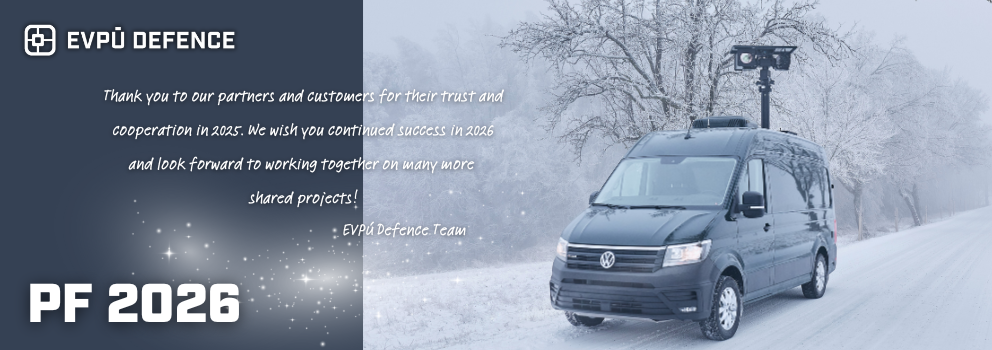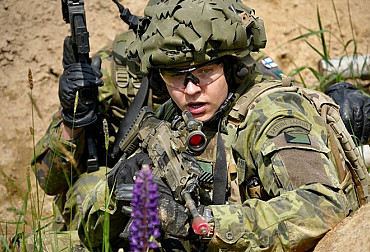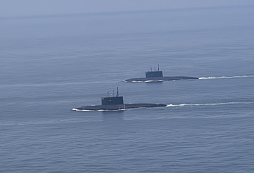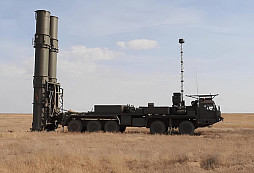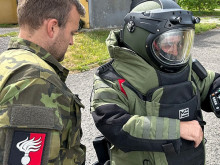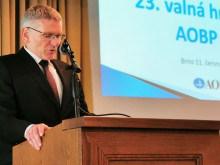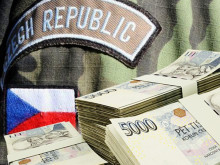Colonel Petr Manda: military unmanned systems have their irreplaceable role, but it cannot be argued that they are the decisive weapon
Recently, unmanned aerial systems have been increasingly used on modern battlefields. They have already played a significant role in the Nagorno-Karabakh war in 2020, for example, and their importance has also been evident on the Ukrainian battlefield for over a year. The Czech army is well aware of the high effectiveness of the deployment of unmanned aerial vehicles and, in addition to the smaller drones it already uses and plans to expand their use further, it is apparently planning to acquire higher-class combat drones in the future. In relation to military drones, we asked Colonel Peter Manda, Commander of the 533rd Unmanned Systems Battalion, for an interview.
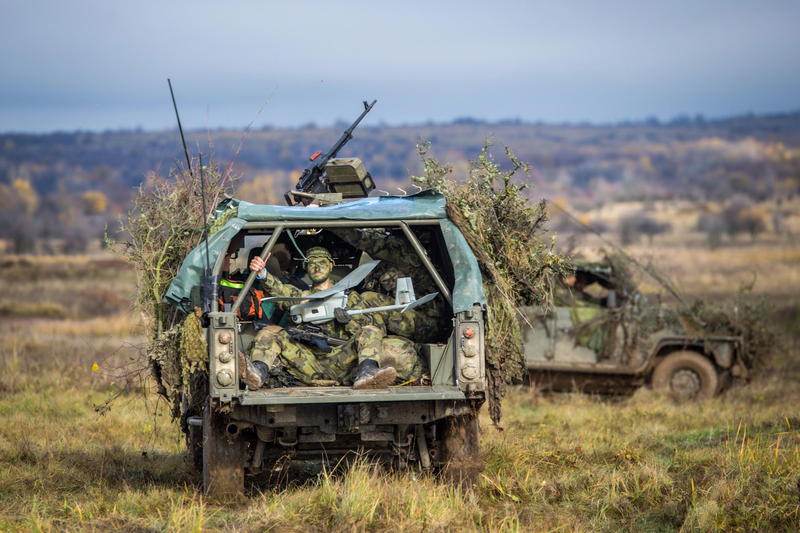 Picture: The Czech Army is well aware of the high effectiveness of deploying unmanned assets and, in addition to the smaller drones it already uses and plans to expand their use further, it is apparently planning to acquire higher-end combat drones in the future. (RQ-11B Raven unmanned reconnaissance vehicle pictured) | 533. prBS
Picture: The Czech Army is well aware of the high effectiveness of deploying unmanned assets and, in addition to the smaller drones it already uses and plans to expand their use further, it is apparently planning to acquire higher-end combat drones in the future. (RQ-11B Raven unmanned reconnaissance vehicle pictured) | 533. prBS
Armies use both small so-called pocket drones (such as the Black Hornet) and drones the size of conventional aircraft (such as the Global Hawk). What types of drones are currently used by our military?
The Army currently has a wide range of unmanned systems across the following Class I categories, according to NATO's standardized classification. The smallest ones, the "micro" category, are represented by the RQ-12 WASP or the aforementioned Black Hornet systems. The "micro" category is followed by the "mini" category, represented by the RQ-11B Raven, RQ-20B Puma 3AE and Dragonfly A quadcopters. However, the most powerful and largest system, which falls into the "small" category, is the ScanEagle, which has an operational range of over 100 km and an endurance of flight of over 18 hours. In its five-year deployment in Afghanistan, it has proven to be quite reliable with an achieved flight time of over 3,500 flight hours. All of these UAVs are equipped with sensors to conduct aerial reconnaissance in the visible and infrared part of the electromagnetic spectrum. The AFKR is also represented within the NATO AGS Force at Sigonella Air Base in Italy, where several specialists are involved in the operation and operational use of the RQ-4D Phoenix unmanned reconnaissance aircraft.
UAVs are now considered by some analysts to be a critical weapon for the future battlefield. It is sometimes even stated that tanks, artillery or IFVs will no longer be needed on the battlefield due to the massive involvement of drones. How do you see this?
From the beginning, military unmanned systems have been developed to perform so-called 3D tasks – Dull, Dirty, Dangerous. Loosely translated, this means the ability to perform tasks that are stereotypical, tedious – i.e. challenging/tiring for the human on board the manned aircraft (long-term surveillance). They also offer the ability to operate in environments that are harmful (e.g. chemical and radiation reconnaissance) and in environments where there is a significant risk of losing the aircraft at the cost of obtaining critical information (e.g. overcoming air defence protected space). Due to their specific capabilities, UAVs have an indispensable role in all types of military operations, but it cannot be argued that they are the decisive weapon. Like any other weapon, they have both advantages and limitations that must be taken into account in each specific situation and conditions.
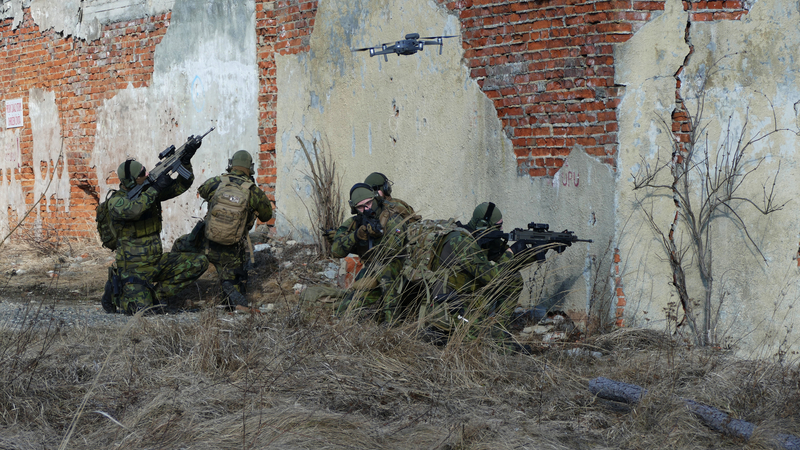
As you state, this may have been perceived especially during the Second Nagorno-Karabakh War, when strikes with unmanned systems and stand-off munitions by Azerbaijani forces became one of the icons of that war. The Bayraktar TB2 systems came to the fore at that time, moving almost with impunity in the skies above the battlefield and successfully contributing to the elimination of countless ground targets of the Armenian army, either directly – with their own weapon systems, or indirectly – by directing artillery fire. The success of these tactics was simultaneously enhanced by extensive propaganda in the media and on social media, i.e. in cyberspace.
Similar tactics were evident at the beginning of the Russian-Ukrainian conflict, when Ukrainian TB2s successfully participated in halting the advance of Russian forces. However, these drones gradually disappeared from the main scene. This was due to the Russian military's more active and effective use of air defense and electronic warfare assets. Thus, the activities of these tactical drones have probably shifted from the forward edge to more inherent depth or to secure areas without direct threat/outside the effective range of Russian air defense assets, but this also limits their capabilities, at least in the use of weapon systems with a tabulated maximum range of 8-14 km.
Does the Czech Army envisage that the deployment of drones will continue to be concentrated in your battalion in the future, or, especially in the case of smaller drones, will these assets reach other units?
Unmanned systems are not the exclusive preserve of our battalion. Within the Czech Armed Forces you can already find them, for example, in the Special Forces or the Airborne Regiment. In my opinion, their proliferation, i.e. especially systems of lower categories to smaller units, is more than desirable, which is confirmed by the experience from the Ukrainian battlefield. The acquisition of this capability will become a significant effect to support planning and combat management and will bring to commanders at the lowest levels a tactical advantage in the rapid acquisition of reliable information. The unique capabilities of smaller unmanned systems combined with the use of special sensors should contribute to a significant increase in the capabilities of reconnaissance units of troop types, for example, in conducting chemical and radiation or engineer reconnaissance.
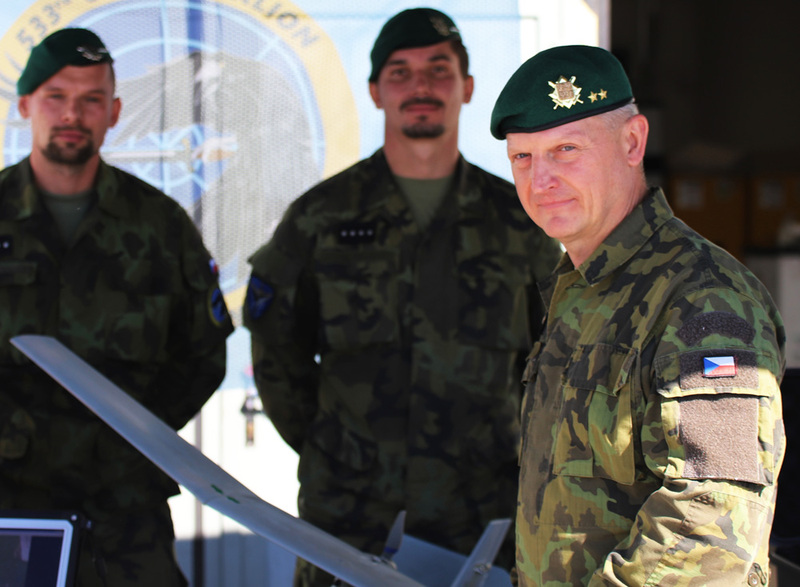 Picture: Commander of the 533rd Unmanned Systems Battalion Colonel Petr Manda | 533rd prBS
Picture: Commander of the 533rd Unmanned Systems Battalion Colonel Petr Manda | 533rd prBS
What is the lowest level at which you think the involvement of drones and unmanned aerial vehicles should operate within the Czech Armed Forces (squad, platoon, company...)? Especially considering the experience of the conflict in Ukraine.
Small, simple, cheap and accessible unmanned systems that are easy to operate could have their place already at the platoon/company level as a complement to the commander's binoculars, to conduct their own reconnaissance, which is one of the basic duties of every commander. They should serve to streamline situational awareness, especially in opaque terrain or when conducting combat in built-up areas.
Unmanned systems of lower categories (mini and small) have become a phenomenon of the conflict in Ukraine, primarily commercially available multicopters, which have found their place on both sides of the fighting, where they are used quite frequently.
The main reasons for their mass use have been their high technological maturity, the quality and accuracy of the acquired image information, advanced automated functions, ease of operation, reliability, short time of preparation for operation and, of course, their easy availability and significantly lower purchase price. Both sides are thus supported by public fundraising to procure and deliver these systems to support troops on the front line. Similarly, workshops are organised for amateur operators from the general public to learn about the specific capabilities of multicopters for military use, including the application of improvised solutions.
However, the deployment of commercial multicopters to support and conduct combat operations is not entirely new. The pioneers of this tactic, which has since been adopted by Iraqi security forces, were members of the Islamic State during the 2016-2017 Battle of Mosul. In the largest operation in the urban agglomeration since the Battle of Stalingrad in World War II, drones provided intelligence on advancing Iraqi security forces units through the city streets, guided the movement of suicide bombers in armoured vehicles packed with explosives, and attacked by dropping improvised munitions.
How is your battalion currently manned?
The battalion has moved into its fourth year of construction since its inception and is being progressively staffed based on a schedule of capability expansion and equipment additions. We have applicants for service from both civilian backgrounds and from other branches of the Army. To recruit and suitably place applicants, selection processes are organised. The next one will take place on 23-24 May 2023.
In the future, I could see the battalion expanding to include an active reserve unit, which I think will be of interest. We've certainly already had a few inquiries from the public on this topic.
You undoubtedly have specific requirements for your members. What all does a UAS operator have to meet and how long does it take to train one?
According to the current legislation, the requirements for personnel readiness vary with the category of the UAS, with respect to its maximum take-off weight and flight parameters.
To operate unmanned systems of the "mini" category (e.g. RQ-11B Raven, RQ-20B Puma 3AE), a three-week basic flight training course for UAS operating personnel is required, followed by a type course for the respective unmanned system lasting approximately two weeks. Upon successful completion of the courses, operators then receive a certificate of airworthiness.
For unmanned systems in the "small" category (ScanEagle), we are talking about an additional five months of basic flight training to authorize independent flying and to start the continuation and combat training conducted as part of the unit's flight operations. Due to the fact that the maximum take-off weight of the ScanEagle aircraft exceeds 20 kg, it is already a certified aircraft, registered in the military aviation register, therefore, the operator pilots and engineering aviation service personnel hold valid military aviation personnel certificates, who are regularly tested on professional theoretical and practical knowledge and skills. Operator pilots must also undergo an annual medical examination at the Institute of Aviation Health.
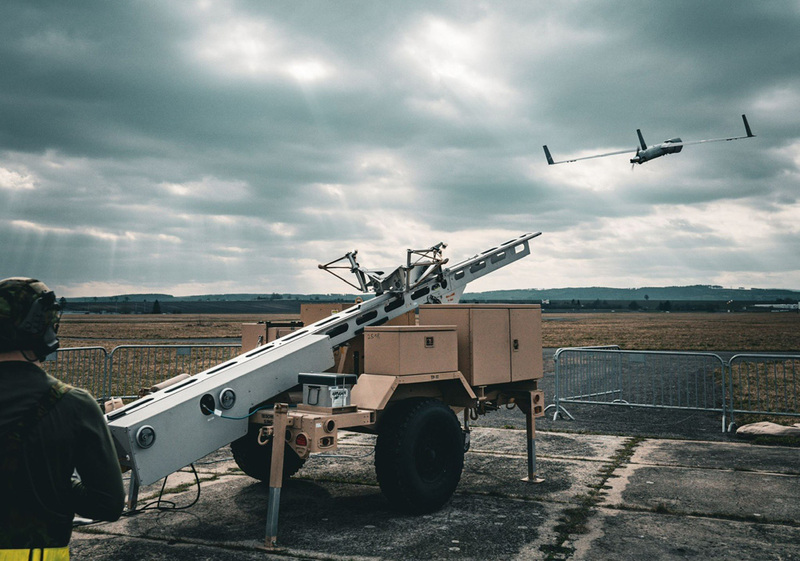 Picture: Takeoff of unmanned reconnaissance vehicle ScanEagle | 533rd prBS
Picture: Takeoff of unmanned reconnaissance vehicle ScanEagle | 533rd prBS
The operation of higher categories of unmanned systems will in future become the top of the pyramid in terms of the extent of training requirements for personnel. More powerful flight parameters, the ability of these aircraft to fly even in bad weather, the simultaneous use of different types of sensors, operation in non-segregated airspace require further expansion of knowledge, for example in terms of instrument flight rules (IFR) and English aviation phraseology according to ICAO standards.
Is there any monitoring and subsequent evaluation of the possible use of civil UAVs for your needs within your battalion?
We certainly monitor developments in unmanned systems, not just military ones – as well as current technology trends. We also have opportunities to participate in various demonstrations, lectures, tests and workshops, either as contributors or audience members. In the last week of April, I gave a lecture at the Brno University of Technology on the use of unmanned systems in the armed forces, and subsequently I also had the opportunity to learn about interesting science and research projects not only on unmanned aerial systems but also on unmanned ground systems. We have also recently started cooperation with the University of Defence in the field of 3D printing. As a hotbed of innovative solutions, I definitely consider broader cooperation with the university environment to be important and beneficial.
There are also many enthusiasts in our ranks who deal with the issue of drone flying or follow technological trends in their spare time and bring their experience back to the units to improve operations and training. At the same time, as a user, we are also involved in supporting the implementation of projects in the field of unmanned systems development within the Czech Armed Forces. We also closely monitor the experience of deploying unmanned systems in current conflicts.
How difficult is it to reconcile the training needs of your UAV operators and civil air traffic?
It is not difficult at all, we follow military aviation regulations, which are based on civilian regulations. Of course, we have some specifics. We fly in designated areas/corridors, primarily in military harbours, which are designated for flying military UAVs and are publicly published in the Aeronautical Information Manual of the Czech Republic.
What has been the experience of more than a year of conflict in Ukraine from the perspective of the commander of the 533rd Battalion?
The conflict in Ukraine is first and foremost a tragic event, but like any war, it brings new weapons and tactics.
As I have mentioned in previous paragraphs, the unmanned systems field has primarily involved the widespread use of various types of commercial or indigenously produced multicopters, which have risen to the level of lower tactical units, where they have found application primarily in the tasks of aerial reconnaissance, providing situational awareness to commanders, directing artillery fire, and the ability to carry and drop ordnance.
A high degree of innovation and improvisation has also contributed significantly to their effective use, for example, by technical interventions in the control units to remove some of the features that allow surveillance by the adversary, and the use of 3D printing to produce damaged components, ejection mechanisms, stabilising surfaces for improvised munitions, or even entire multicopters, both multi-purpose and those used as flying munitions – based on the platform of racing FPV drones, capable of carrying even a PG-7 anti-tank cumulative missile to destroy armoured vehicles.
A functional command and control system for the timely transfer of relevant and accurate reconnaissance information about the adversary to command posts or directly to firing assets is also an important prerequisite for successful combat operations. Here, it is possible to observe the active use of the Starlink communication system, providing reliable internet connectivity for the implementation of information flows through standard communication or special applications operating on commonly available mobile platforms. These applications are then used "at a few clicks" to transmit information about targets in a timely manner and to build a common operational picture.
A crucial experience for us is the active action of electronic warfare systems by jamming the signal of unmanned systems control channels and satellite navigation signals, which significantly limit the operations of unmanned vehicles, or the countermeasures and procedures adopted to enable their own operations even in these conditions.
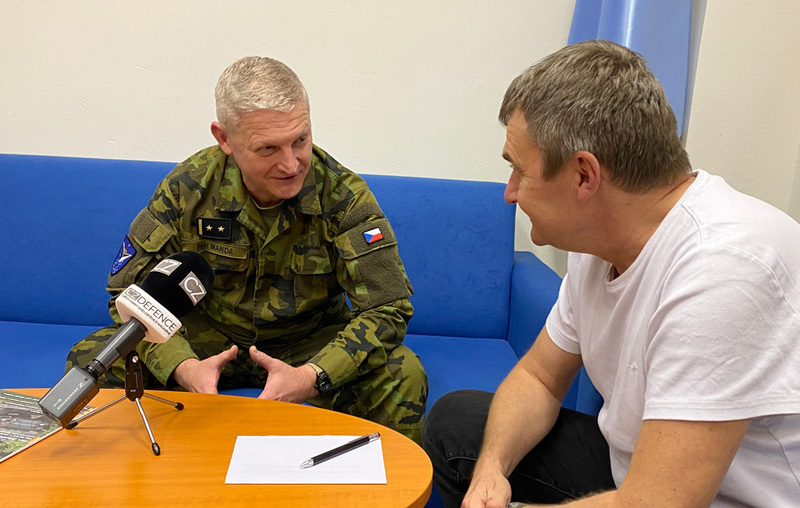 Picture: Moment from the interview with Colonel Petr Manda | Michal Pivoňka / CZ DEFENCE
Picture: Moment from the interview with Colonel Petr Manda | Michal Pivoňka / CZ DEFENCE
Last but not least is the presence of air defence assets on the battlefield designed to directly protect deployed ground troops. In this area, the renewed importance of manned anti-aircraft weapons is also evident. A separate chapter is devoted to the use of stand-off munitions in greater numbers. In my opinion, it is very important to closely monitor the tactics of using unmanned systems in contemporary conflicts and then to implement these findings into one's own training.
To what extent is artificial intelligence currently integrated into unmanned vehicles and what is it already facilitating? How do you see AI being integrated into unmanned vehicles in the future?
The elements of artificial intelligence implemented in contemporary systems can be discussed, for example, in the case of the ability to perform pre-programmed autonomous flight with the involvement of sensors to avoid obstacles, automatic optimisation of the flight profile to achieve the best result of the sensors used, or comparative navigation capabilities based on image data acquisition in case of signal interference from satellite navigation systems.
Further increases in autonomy levels can be expected in the future by minimising human control inputs. One of these functionalities will be the application of the automatic target recognition and identification capabilities already under development and testing. Another interesting area will be the possibility of mutual cooperation between airborne and ground autonomous platforms.


